Tommy Hilfiger’s life spent taking the pulse of culture
On the eve of his label’s 40th anniversary, an unexpected pivot in Tommy Hilfiger’s creative direction proves he still has plenty more to say.
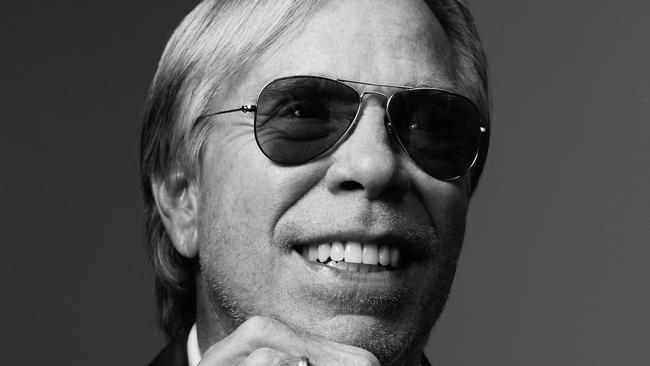
“I love pop culture,” Tommy Hilfiger says – and it’s hard to downplay the potency of that statement. The designer sits on a leather sofa in a wood-panelled showroom at his offices in Manhattan, where walls are covered with iconic ephemera: from pictures of Beyoncé, Kate Moss and David Bowie wearing Hilfiger’s famous red, white and blue flag logo, to those black-and-white ad campaigns from the 1990s that exported his idea of sporty prep to millions around the world. “I’ve always used cultural icons as either collaborators or as ambassadors for the brand … [pop culture] moves the needle in society,” he says.
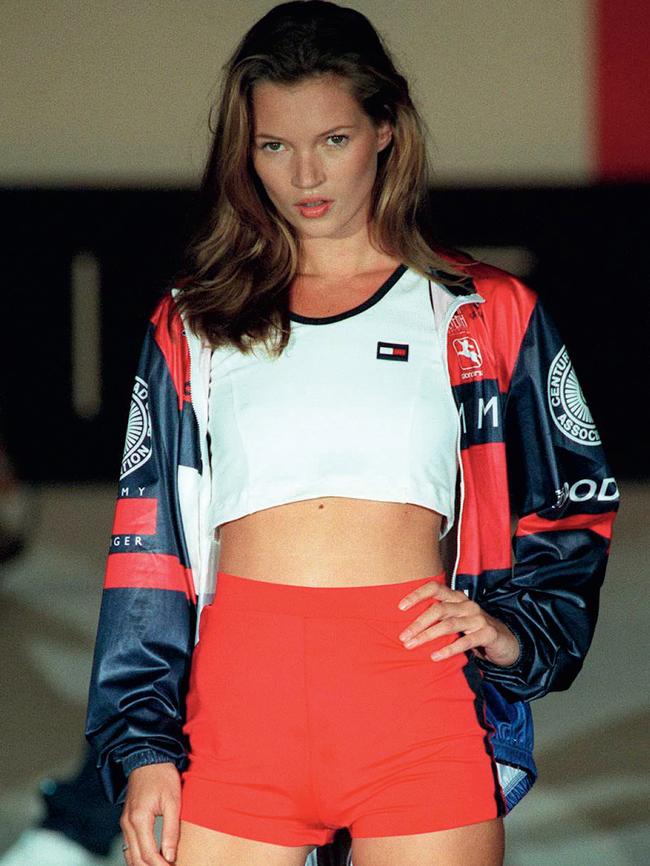
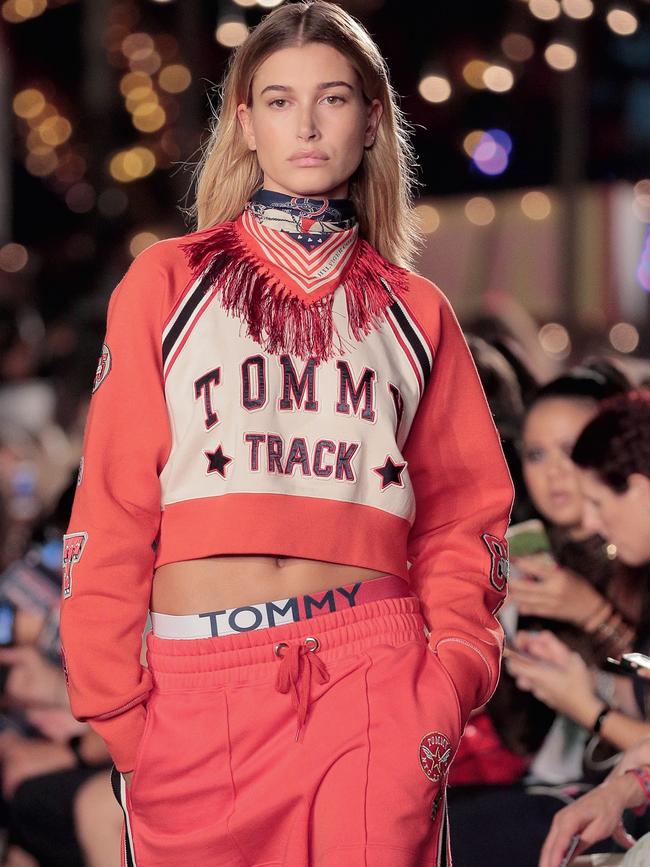
Indeed, Hilfiger, who started his label in 1985 and was inspired by Andy Warhol, mastered the union of fashion and celebrity ahead of the pack. Raised middle-class in upstate New York, Hilfiger has always understood the power of arresting visuals and clothes that linger in the mind. He hard-launched his company by investing in a billboard in Times Square – effectively the equivalent of a viral social media campaign today – with advertising that cemented him among the commanding American designers of the time: Calvin Klein, Perry Ellis and Ralph Lauren.
Through the 80s and 90s, when the lofty fashion industry rarely made efforts to gel with the masses, Hilfiger’s vision of polished American prep at accessible prices used household names including Britney Spears, alongside people like Moss, to appeal to a large audience, while still maintaining credibility in fashion’s upper echelons.
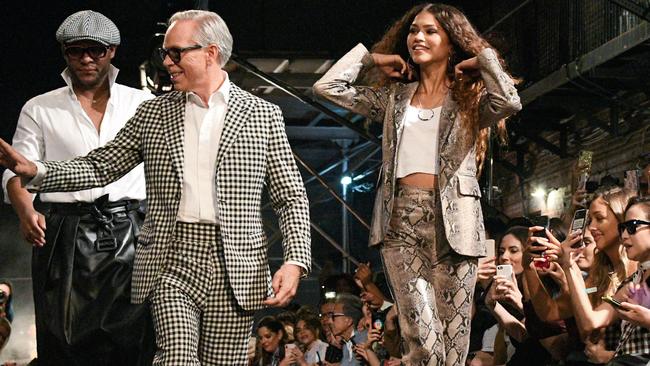
More recently, he’s brought on the likes of Gigi Hadid, Zendaya and Lewis Hamilton as co-designers, extending his influence and helping the brand reach around USD$9 billion in global sales last year. Designing for the TommyNow line, introduced in 2016, he showed pieces these names helped design that could be owned as soon as they hit the runway, a genius marketing stroke.
“Gigi Hadid came in at nine in the morning one day expecting to spend an hour [designing], and she spent until six o’clock in the evening, because she became obsessed with choosing the right fabric and the right colours,” the designer recalls of his two-year collaboration with the model that began in 2016. “A lot of companies hire them and use them as the face … we may be the first company to really allow them to design and play.”
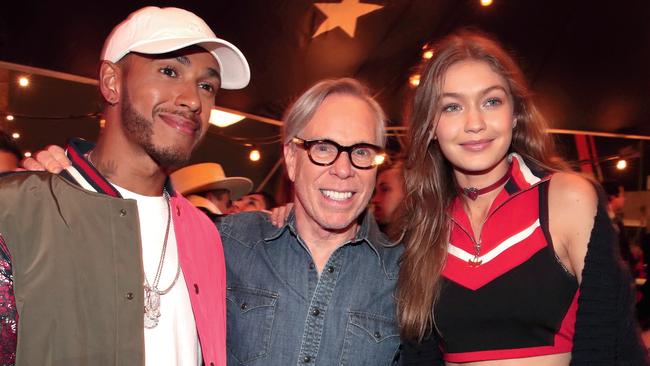
Bold, recognisable branding is how Hilfiger went from a suburban upbringing to founding a fashion empire with more than 2,000 stores worldwide. But this season he’s in a different state of mind. The designer is speaking a day before his autumn/winter ’24/’25 show, held inside Grand Central Station, which painted a different, more refined picture of what his mega-brand can do. The opening look – a wide-collar blue striped shirt with thick, camel wool trousers – set the tone for a collection that prioritised lustrous, expensive fabrics with fewer sightings of his once-prominent logo, the focal point of many of his original denim pieces.
“I really like the clothes,” he says animatedly, with an air of being in the flow of things with his newest collection. The process of putting together a show is often frenetic, but Hilfiger is visibly relaxed. “Sometimes, at the last minute, we’re rushing to get things sewn and get things from factories, but everything is falling into place.”
“It’s all about timing … we’re moving away from streetwear and into a more polished look”
This season’s pieces are more premium in cut and finish than past Tommy Hilfiger designs; the angular blazers, tailored pleated skirts and knee-high riding boots in polished leather evoke the collegiate feel of Gloria Steinem and Ali MacGraw in the 70s. It was a departure from Hilfiger’s louche denims and bandeau tops of the past, and while they’re still core brand staples, he says elevating his womenswear was a top priority.
“The shapes are more sophisticated, the fabrics are more sophisticated, a little bit more grown-up,” he says. “We’re really leaning into [womenswear] because the women’s part of the business is smaller than the men’s – but it should be the opposite.”
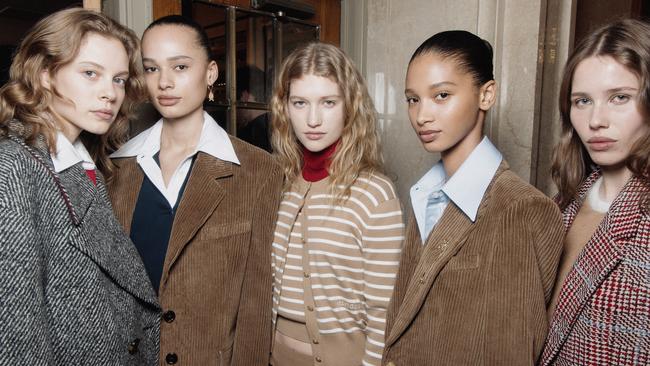
It makes sense. While Hilfiger has shown his command of the modern wardrobe, his famous shirts, jeans and chinos are globally beloved by male customers, with muses like Lewis Hamilton and rapper A$AP Rocky. But through this season’s enduring womenswear – and the signing of ambassadors Sofia Richie Grainge and Kendall Jenner, bellwethers of fashion’s current affinity for timeless style over trends – Hilfiger once again has his eye on the moment. “In the fashion world, it’s all about timing … I can sense that we’re moving away from streetwear and into a more polished look,” he posits. Even the runway eschewed supermodel or celebrity casting, as Hilfiger has done in the past, for industry-known faces like Paloma Elsesser and Australia’s Aleyna Fitzgerald, giving an in-the-know prestige. “Everyone wants a piece of that lifestyle,” he adds.
Tommy Hilfiger’s prices make its pieces more accessible than some other labels, but the designer is driven to rival them in construction. “I’m more quality conscious now than I’ve ever been … I think that bar has been set by a lot of the luxury players,” he says. “They’re making even a jean, or a hoodie, and the quality is incredible, on a luxury level. I want to be there.”
But for autumn/winter ’24/’25’s abundance of tailoring and leather, sportswear was still present; caps, sneakers and sweaters were styled with trench coats and corduroy. In 2024, sportswear has become a major category in luxury fashion, but Hilfiger has long seen value in garments once only designated for sports settings.
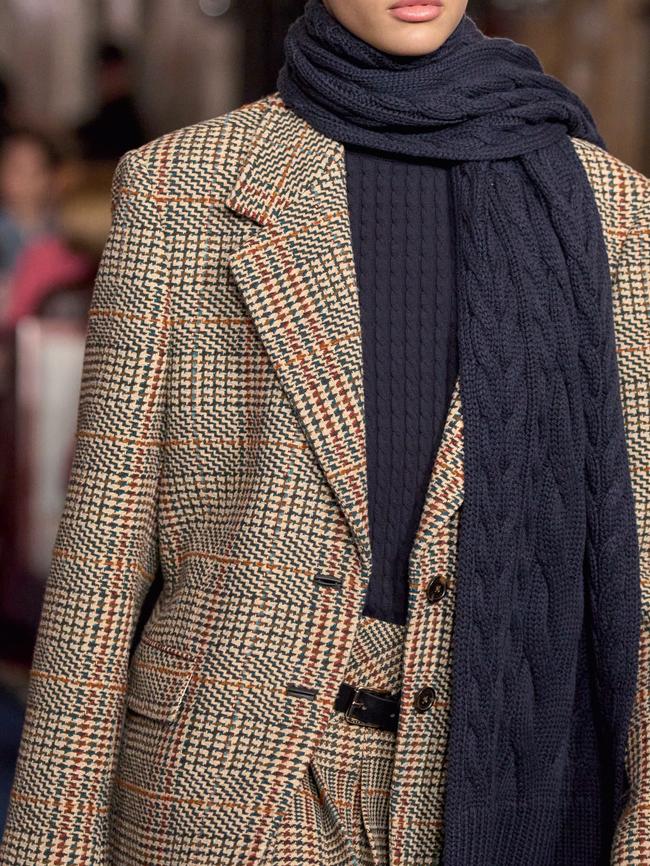
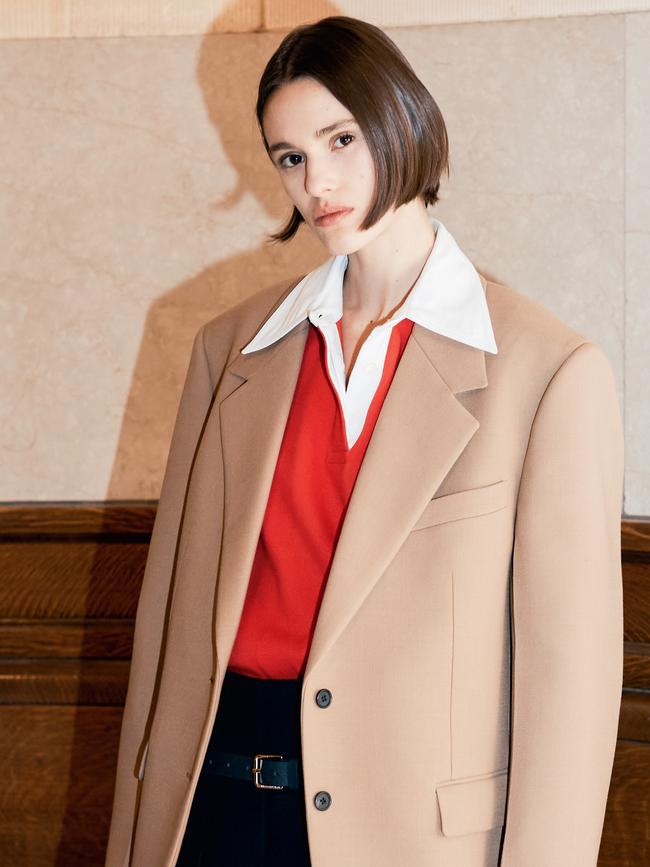
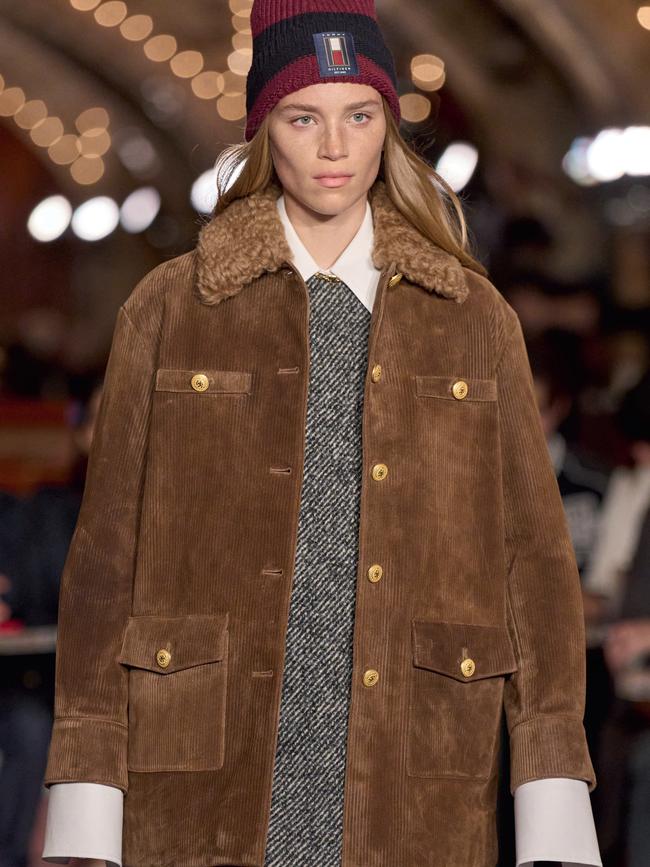
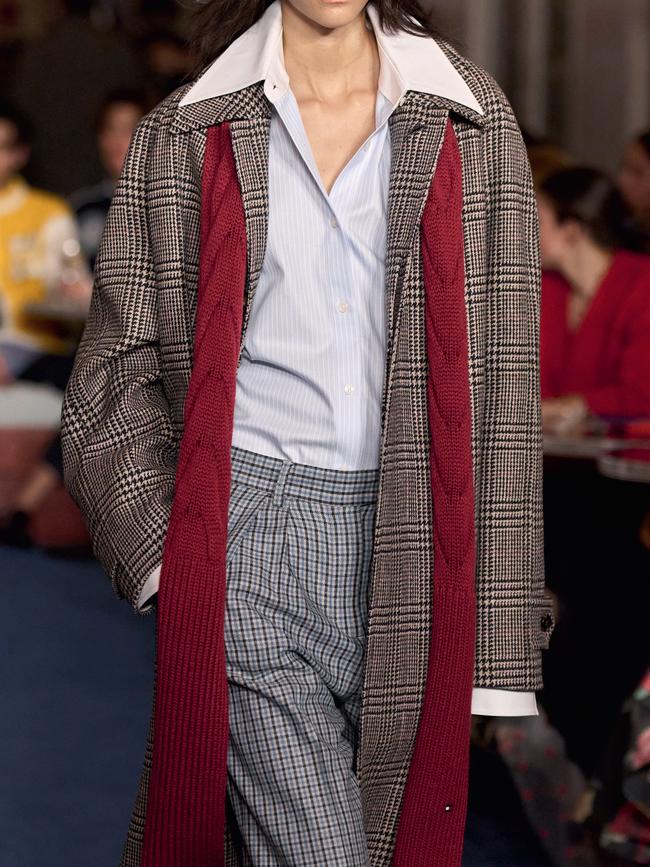
“Some people think sportswear is athletic wear for the field or the court, but in America, sportswear is casual wear,” the designer explains, adding that his mix of sport clothes and formalwear has been a constant at the brand since 1985. Combining prep with laid-back comfort helped lay the groundwork for what would become known as ‘streetwear’; with artists like rapper Tupac Shakur and R&B star Aaliyah becoming faces of the trend. “I tried to merge [sportswear and streetwear] together in the early 90s … I think I was successful in doing that,” he adds.
Hilfiger is also inspired by his location. He moved from New York to the seaside town of Palm Beach, Florida, during covid, which reignited an interest in all things nautical. “I know nautical is not a sport, but sailing is a sport,” he says. “I love the pea coats and the gold buttons, and the captain’s coats with simple stripes,” he adds, pointing to autumn/winter ’24/’25, where gold accents and nautical motifs are featured without disrupting the collection’s slick, modern feel.
His intuition – plucking elements he’s drawn to from the wider world and blending it with his democratic approach to fashion – seems only to be getting sharper now in his seventh decade of life. This pared back aesthetic marks a new chapter for Hilfiger as he approaches four decades in business in 2025. But though he’s embracing the future,
partnering with K-pop super group Stray Kids and reshaping ‘American’ style for a global audience, the core tenets of his success are set in stone. This season’s seamless New York show was the perfect reminder. “Everything is falling into place, and we have all the clothes here. We have a great cast, we have the music meeting coming up … it’s sometimes nerve-racking at the end, but I’m very calm,” Hilfiger says. It’s hard to imagine his flag, planted firmly in the ground, will ever waver.
This article appears in the July issue of Vogue Australia, on sale now.



To join the conversation, please log in. Don't have an account? Register
Join the conversation, you are commenting as Logout